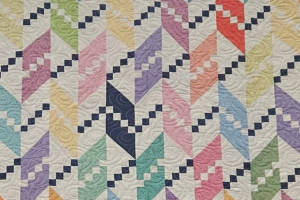Top 10 Tips for Getting into a Gallery

WORDS / ARKANSAS ARTS COUNCIL
Art galleries can be great for artists who want to meet collectors and get help with promotion and marketing.
“If you enter into a good partnership, they’ll help your career and move your work,” says Little Rock artist Robert Bean. “Depending on the gallery, it could lend a sense of legitimacy to your career in the eyes of other curators and venues.”
So, getting into one gallery is the first step to getting into the next and the next and the next. And, while social media has changed the arts marketing landscape by allowing artists to access audiences directly, it hasn’t replaced curators’ expertise in the fields of cultivating and connecting artists and clientele and showcasing tangible artworks.
“There’s social interaction in person, where hopefully conversation about the work is initiated,” says Elise LaMaster, an artist and owner of Amiee Thompson Gallery, which recently opened in Benton. “(There’s also) the experience of being able to see the art as a tangible object – that’s something that social media presence just can’t give you.”
So, what can artists looking to get into a gallery do? We’ve collected some advice from artists, gallery owners and curators.
- Join the Arkansas Arts Council’s Artist Registry, then update your images at least annually. Sure, it’s not a shoo-in, but collectors, curators and gallery owners sometimes browse the registry. Other places they look? That’s right, Facebook and Instagram. If you’re an artist, and you want to catch the attention of a gallery, it’s best to have some social media presence.
- If you have a website, update it frequently and keep it “clean” and easy to navigate. Make sure to keep up with your social media postings, too. Basic marketing research suggests artists should strive to post at least one item to their social media platforms per day. Believe it or not, your Instagram page could make or break your chances for getting gallery representation. “Getting your work ‘seen’ on the Internet and through social media is a fantastic way to build an artistic community and catch the eye of a curator or collector,” said Carey Voss, curator of exhibits at the Historic Arkansas Museum. That said, museums and other organizations often have a curatorial team that organizes, plans and reaches out to artists individually for exhibitions. Other gallery curators tend to look for artists already exhibiting somewhere. Getting into a gallery can be competitive because, typically, a gallery can only hold between six and 12 shows a year, and there are more artists than brick-and-mortar galleries. To get your own exhibition at that level requires the artist to get to the point in his or her art career that curators notice the work “fits” the venue’s mission.
- Have an artist statement, biography, resume and portfolio ready to go. Make sure your digital images are at least 300 dpi quality and look good. Hire a professional photographer if you aren’t sure you can take high-resolution photos with good lighting.
- Having a couple of pieces framed, wired and ready to go is often a plus, says Joelle Storet, an artist who also curates and manages Art Venture NWA in Fayetteville. Curators say they are open to CDs, thumb drives and websites for images, just as long as the images of the artwork are good quality and will open for different computers.
- Visit the gallery’s website, go to the venue and attend receptions. The art world is about art production and networking. Today’s galleries are looking for something special, whether it’s a themed exhibition or a fresh idea. “Each curator will vary but, in general, we seek new work that offers a unique perspective,” says Dr. Lenore Shoults, curator for the Arts & Science Center for Southeast Arkansas. “We also want to encourage artists to take chances,” says Teresa Carlisle, who recently opened The New Gallery in Little Rock this past June. Check out the venue to decide if it’s right for you. Look at what other artists are showing. Where might your work fit in? Only after checking out the gallery should you make a query.
- Sometimes gallery guidelines are online, sometimes not. Do your research, then reach out in a polite and professional way. Being too pushy or being rude is a definite turn-off for galleries that already have plenty of other artists trying to catch their attentions. So, be considerate of the gallery owner’s time, don’t just walk in off the street, Bean says. Call and make an appointment first.
- Have at least 15 pieces that are a consistent style, technique or subject matter ready to go. Artists need bodies of work that show technical skill and cohesiveness. Curators from several Arkansas galleries said they want to see artwork that expresses a similar theme, color, medium, etc., and is distinctive of the artist. Curators are looking for work that has impressive skill or technique and a well-thought-out concept.
- Make sure to read the guidelines. Ignoring the rules is “like starting the conversation with a strike against you,” Bean says. Not providing sufficient materials for consideration is the No. 1 mistake artists make when applying to for gallery representation, Storet and other curators say. For example, some artists submit material without up-to-date contact information, says Carlisle. “There have been a couple of times when we really liked a particular artist’s work and wanted them to exhibit in our gallery, but we were unable to get a hold of them and had to move on to a different artist,” Carlisle says. Artists should read the submission guidelines completely before submitting work to a “call for entry” exhibition opening. “Just because your piece is really strong, doesn’t mean it’s appropriate for the particular show,” says LaMaster. Submitting artwork to galleries is similar to what writers go through when submitting writing to publishers. Rejection will happen, and happen often, but you must keep trying, LaMaster says.
- Each gallery is unique. Some galleries have stables of artists; some put out calls for portfolios annually; some represent under-represented communities; some have calls for entry; and some have teams that approach certain artists instead of the other way around. Galleries can be competitive, depending on the region and venue, too. For example, the Arts & Science Center for Southeast Arkansas is considered “highly competitive.” But, in general, Arkansas doesn’t have as many galleries as other large cities do, which may translate into more opportunities, LaMaster says. Still, artists interested in getting into a gallery may need to do a little more digging and networking to get a foot in the door. It’s also important to realize galleries often plan a year or more out, so be patient and keep trying. Some curators will keep your contact information for a year. “You never know when an opportunity may arise,” Carlisle says.
- Go network. Be involved in the arts communities. Go to events, art receptions, art conferences. Volunteer or help out for an art project or nonprofit art-related endeavor. Meet the people who are making and supporting the arts. Why? Because despite technology that makes social media an easy way to communicate, your art career will benefit from a personal touch. Sure, artists do use Facebook and Instagram, for example, to “like” or “friend” other artists and make digital connections. That’s a great start, but to really use and benefit from social media, you’ll need to find ways to actually talk with and engage these artists. Plus, like most people, artists who network face-to-face are more likely to find jobs and to generate new ideas, which means it’s best to go to those art walks, conferences and art lectures – even if it’s just to introduce yourself and put your card in someone’s hand. Then, you can even use the chat function on a social media platform to ask an artist you admire or want to work with out for lunch.
For more information on artist services or the Artist Registry, contact Robin McClea, artist services program manager, at robin.mcclea@arkansas.gov or at 501-324-9348.





Comments